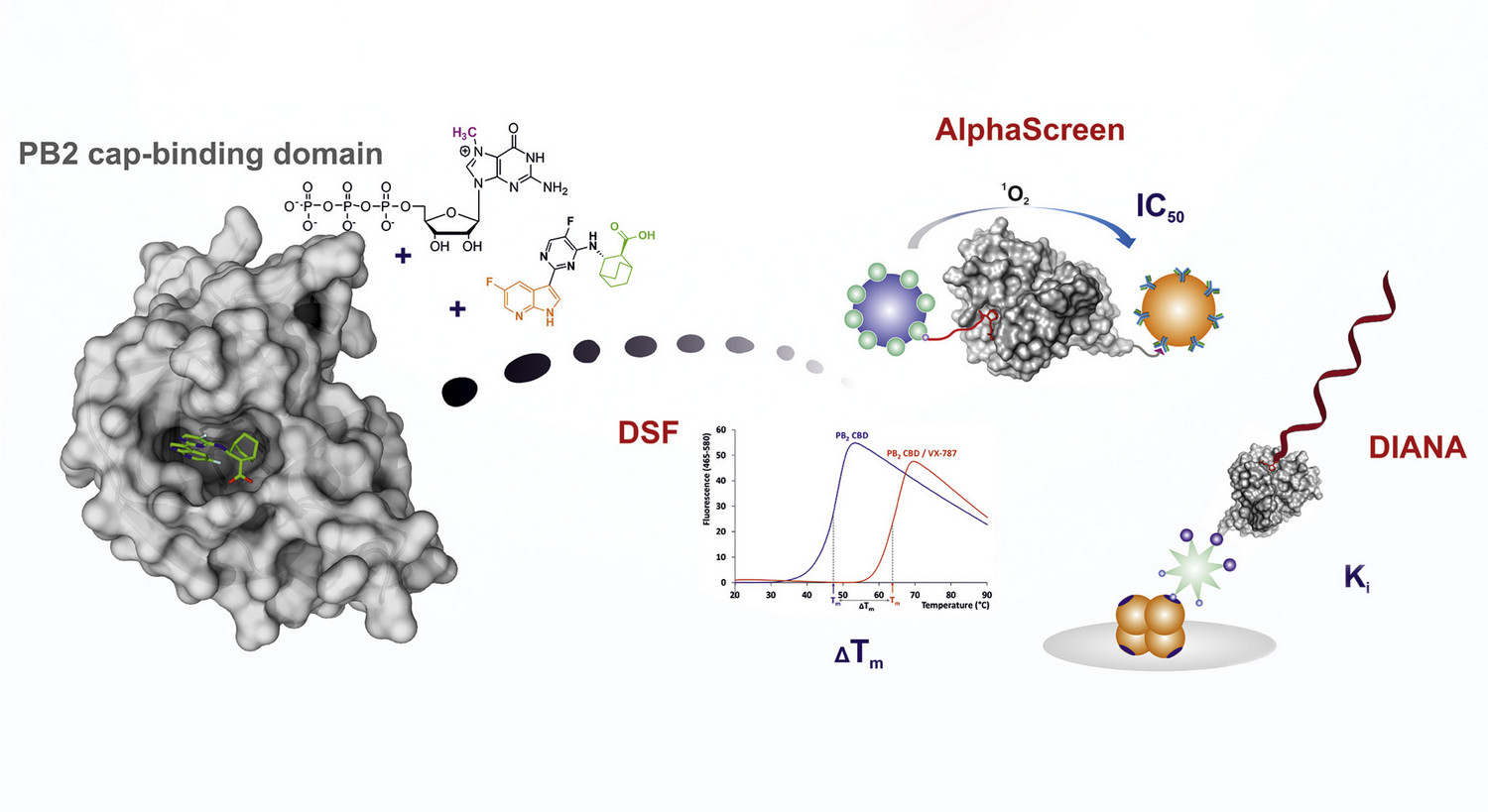
The influenza virus has a unique ability to hijack the host cell's transcription machinery to synthesize its own viral mRNA, a process essential for viral replication. Critical for this process is the PB2 subunit of the influenza virus polymerase complex, which makes it a prime target for small-molecule inhibitors. Blocking PB2 activity directly disrupts the entire viral replication cycle.
Recognizing the limitations of current methods for screening PB2 inhibitors, researchers from IOCB Prague and Charles University developed two novel approaches to evaluate PB2 inhibitors using the screening methods DIANA and AlphaScreen. Their study demonstrates that these methods outperform standard techniques by offering improved scalability, reduced sample requirements, and label-free detection.
These advancements represent a significant step forward in creating more efficient and scalable tools for discovering antiviral drugs targeting influenza.
Read the paper: Čermáková, K.; Gregor, J.; Kráľ, M.; Karlukova, E.; Navrátil, V.; Reiberger, R.; Berenguer Albiñana, C.; Bechynský, V.; Majer, P.; Konvalinka, J.; Machara, A.; Kožíšek, M. The Evaluation of DNA-Linked Inhibitor Antibody and AlphaScreen Assays for High-Throughput Screening of Compounds Targeting the Cap-Binding Domain in Influenza A Polymerase. Eur. J. Pharm. Sci. 2025, 205, 106990. https://doi.org/10.1016/j.ejps.2024.106990






